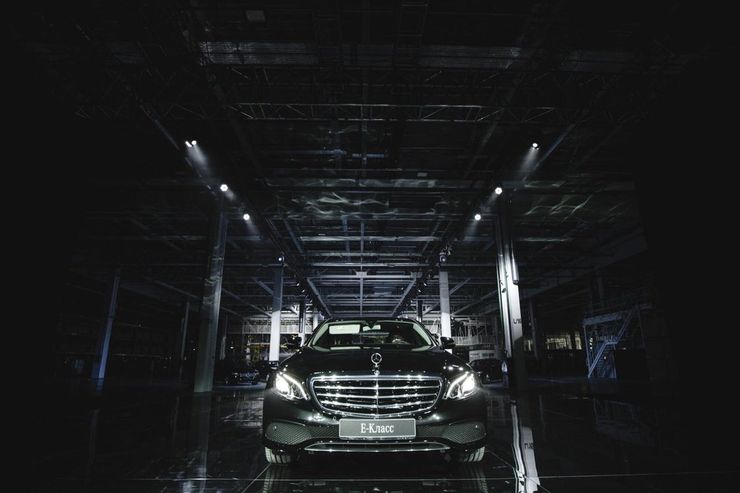Goodbye, German car industry
- October 14, 2022
- 0
As German car brands disperse customers in Russia, hoping to convince the rest of the world of the value and inviolability of their liberal ideals, events are taking
As German car brands disperse customers in Russia, hoping to convince the rest of the world of the value and inviolability of their liberal ideals, events are taking

The kaleidoscope of sanctions imposed on Russia in 2022 is starting to pay off: Europeans stock up on sweaters and firewood, and a flaming gas burner gets the most views. About times, about uses. Double-digit inflation for Europe, where every penny and every glass of beer on Friday is counted in the family budget and stability is the most important value, is an extremely painful phenomenon. But something else is even worse: industrial inflation, which is already over 30%. And the reason for that is gas.
The price rally on the stock markets hurts especially, not in the US or France, but especially in Germany. The German industrial miracle, as senior European diplomat Josep Borrell recently confirmed, was not based on engineering, labor or luck, but on a particular pipe from Siberia. No gas – no production, no matter how many engineers and designers you put on the conveyor.
The “blue fuel”, which has sometimes risen in price, has simply made the German car industry uncompetitive: the price for each car is getting too high, the number of cars sold is reduced, production is reduced, jobs are cut, taxes are cut, the profit is reduced. And so precisely until a lock is put on the gate – no subsidies, however long they last, will be able to offset the monstrously increased costs.
Well, the printing press working day and night always leads to inflation. So it’s a vicious circle, which is already pointless to mention. So Reuters was “satisfied” with the forecast: “The energy crisis could cut car production by nearly 40% or more than 1,000,000 units per quarter — read four million per year.” When? Until the end of 2023. Or tomorrow in the context of the global economy.
At what price manufacturers survived the corona pandemic is still unknown, but it was not easy for anyone. The recovery process had only just begun and there were no positive trends yet. The shortage of new cars was not only in the Russian Federation – all over the world. And now to tackle a more difficult problem: how to produce a car and feed the unions, but at the same time not drive up the price for the end consumer?
There is always a way out, and for German interests it is unequivocal – leave Europe and settle where raw material prices are much lower. For example, in the US, who sell their own four times cheaper than their European friends. No offense, just business, but always welcome, we will allocate land for the plant. Yesterday, this approach may have seemed like a fairy tale, but let’s face it: few people believe that the legendary Jeep, the heir to that same “Willis”, is practically a symbol of the American dream, like Wrangler jeans and a Zippo lighter, is already owned by FIAT for some time, and the “Indian” Cherokee is built on the Alfa Romeo platform. However, this is the modern reality.

The kaleidoscope of sanctions imposed on Russia in 2022 is starting to pay off: Europeans stock up on sweaters and firewood, and a flaming gas burner gets the most views. About times, about uses. Double-digit inflation for Europe, where every penny and every glass of beer on Friday is counted in the family budget and stability is the most important value, is an extremely painful phenomenon. But something else is even worse: industrial inflation, which is already over 30%. And the reason for that is gas.
The price rally on the stock markets hurts especially, not in the US or France, but especially in Germany. The German industrial miracle, as senior European diplomat Josep Borrell recently confirmed, was not based on engineering, labor or luck, but on a particular pipe from Siberia. No gas – no production, no matter how many engineers and designers you put on the conveyor.
The “blue fuel”, which has sometimes risen in price, has simply made the German car industry uncompetitive: the price for each car is getting too high, the number of cars sold is reduced, production is reduced, jobs are cut, taxes are cut, the profit is reduced. And so precisely until a lock is put on the gate – no subsidies, however long they last, will be able to offset the monstrously increased costs.
Well, the printing press working day and night always leads to inflation. So it’s a vicious circle, which is already pointless to mention. So Reuters was “satisfied” with the forecast: “The energy crisis could cut car production by nearly 40% or more than 1,000,000 units per quarter — read four million per year.” When? Until the end of 2023. Or tomorrow in the context of the global economy.
At what price manufacturers survived the corona pandemic is still unknown, but it was not easy for anyone. The recovery process had only just begun and there were no positive trends yet. The shortage of new cars was not only in the Russian Federation – all over the world. And now to tackle a more difficult problem: how to produce a car and feed the unions, but at the same time not drive up the price for the end consumer?
There is always a way out, and for German interests it is unequivocal – leave Europe and settle where raw material prices are much lower. For example, in the US, who sell their own four times cheaper than their European friends. No offense, just business, but always welcome, we will allocate land for the plant. Yesterday, this approach may have seemed like a fairy tale, but let’s face it: few people believe that the legendary Jeep, the heir to that same “Willis”, is practically a symbol of the American dream, like Wrangler jeans and a Zippo lighter, is already owned by FIAT for some time, and the “Indian” Cherokee is built on the Alfa Romeo platform. However, this is the modern reality.
Source: Avto Vzglyad
I’m Sandra Torres, a passionate journalist and content creator. My specialty lies in covering the latest gadgets, trends and tech news for Div Bracket. With over 5 years of experience as a professional writer, I have built up an impressive portfolio of published works that showcase my expertise in this field.